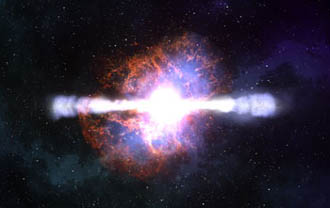
Already a giant in theoretical physics, Stephen Hawking has just completed eight rounds of zero-G weightlessness in preparation for his journey into space. The zero-G flight took place on a modified Boeing 727 plane named "G-Force One", boarded at NASA's Shuttle Landing Facility in Florida. As to why Hawking is going through so much trouble for space flight, he commented:
The planned space trip has been so inspiring that Steve Kohler, president of Space Florida, has renamed the zero-gravity research center in Hawking's honor."Many people have asked me why I am taking this flight. I am doing it for many reasons. First of all, I believe that life on earth is at an ever-increasing risk of being wiped out by a disaster such as sudden global warming, nuclear war, a genetically engineered virus or other danger. I think the human race has no future if it doesn’t go into space. I therefore want to encourage public interest in space.
"I have long wanted to go into space, and the zero-gravity flight is the first step toward space travel. I also want to demonstrate to the public that everyone can participate in this type of weightless experience.
"Finally, I am doing this flight to raise money for a number of charities, including ALS, Easter Seals, Starlight Starbright and the X Prize Foundation."
Full Cosmic Log (MSNBC) ...
(photo by Steve Boxall)













